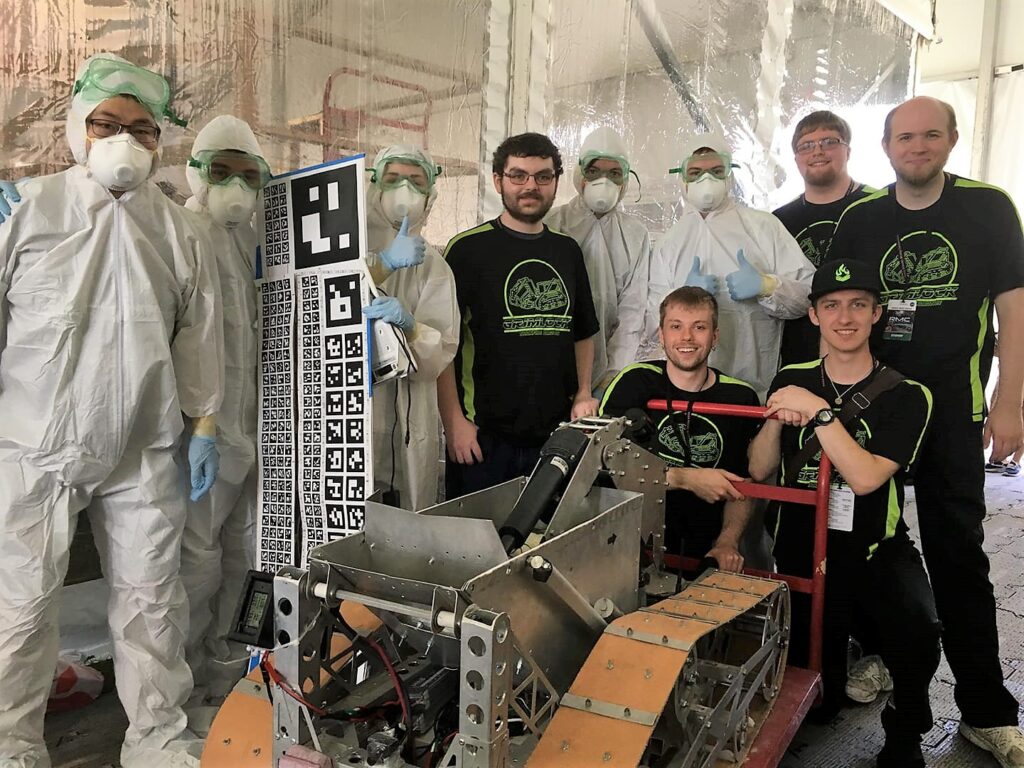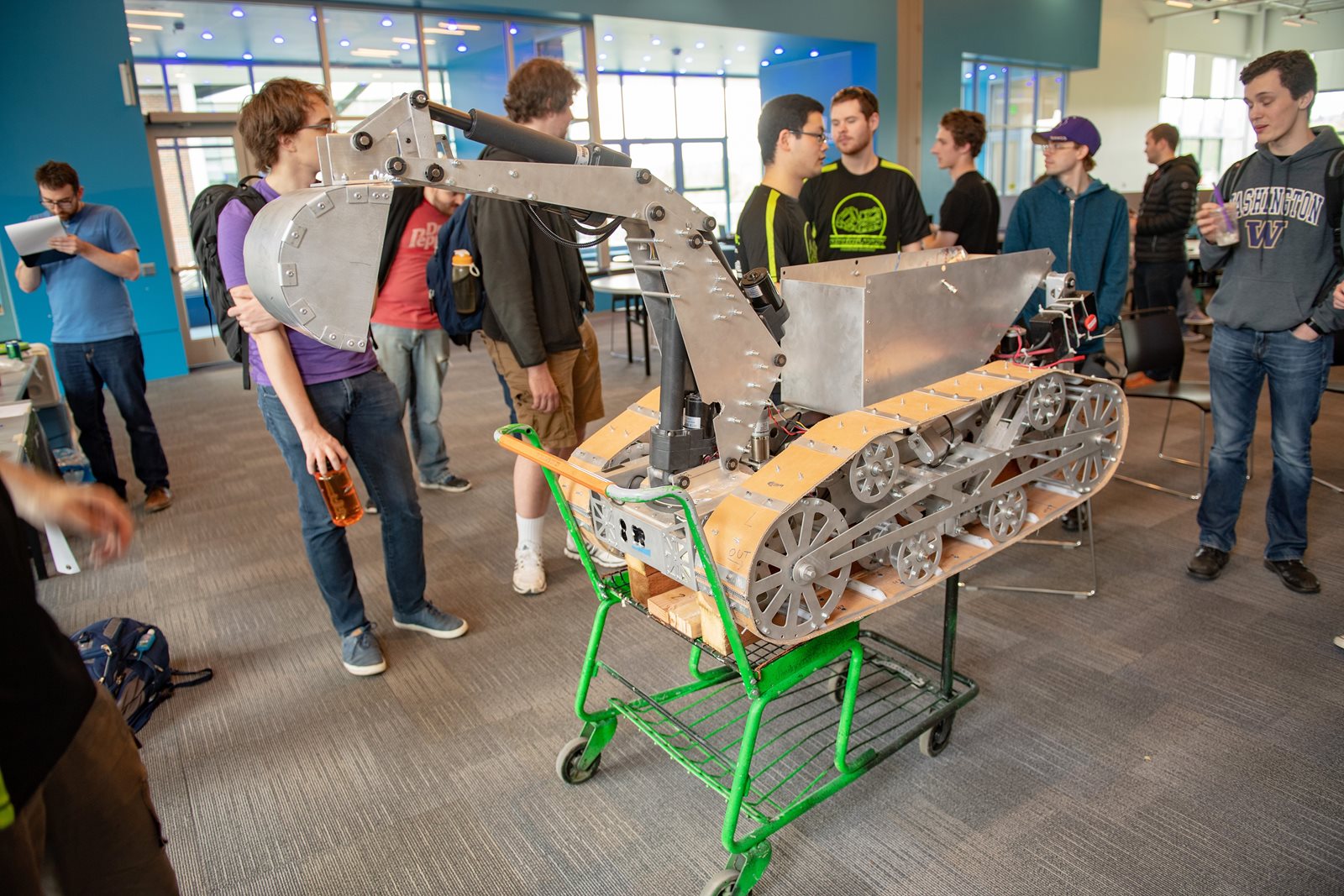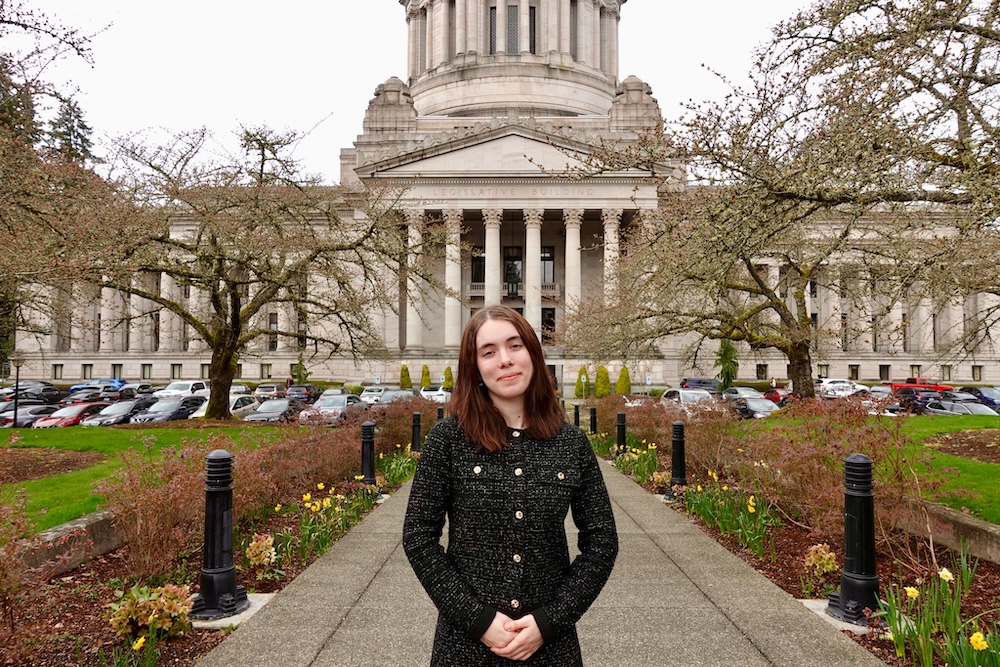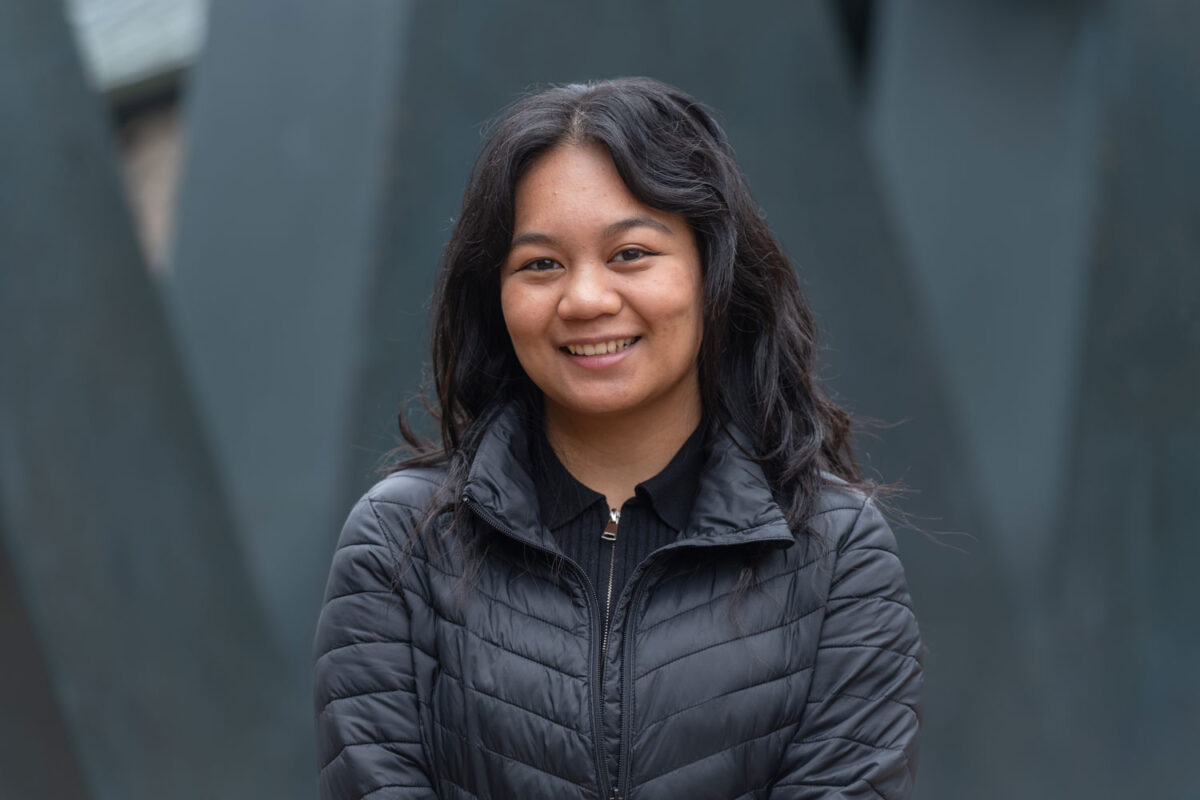
By Zachary Nelson
Throughout history, across the globe, humans have looked up at the night sky and wondered. Now, a group of students at the University of Washington Bothell have become an active part of humankind’s effort to explore space. Members in the TrickFire Robotics club have over the past year spent thousands of hours creating a robot that could rove across Mars and collect Martian dust from below the surface.
Club members designed, developed and manufactured the robot to compete in the National Aeronautics and Space Administration’s annual Robotic Mining Competition, which took place May 14-18 at the Kennedy Space Center in Florida. For the TrickFire Robotics team, being able to participate in this national event for the second year in a row was particularly rewarding. After all the work they put into the robot, they were excited to show it off this year to their peers and NASA scientists.
The students began designing the robot in August 2017. “We got every single idea on the table. Club members’ ideas are valued in our club, no matter their major,” said Ryan Berge, a Computer Science & Software Engineering (CSSE) major. “We then used computer-aided design to shape the parts and make sure everything would fit where it was supposed to.”

After finalizing the design, students developed the software that executes the commands engineers give the robot, enabling it to “see” what is in its way. “This was crucial to make sure our robot could run autonomously. We hoped that it would learn to avoid debris in its path,” said Adam Krpan, a CSSE major.
“I was so excited that we were able to be a part of this competition,” he said. “I imagined our robot on Mars.”
The club members are all grateful for the support they received from UW Bothell, especially during the manufacturing phase. “Some days, we just wouldn’t go home because of how much work we were putting into the robot,” said Levi Stoddard, a CSSE major. “That was OK with UW Bothell though. They gave us 24-hour passes to work in the campus Makerspace. You could find us working on campus through many long nights.”
UW Bothell gave the students more than just time and space.
“The school also let us use its fields as a testing ground for our robot, something that was extremely helpful once the manufacturing was done,” said Berge.
The students also received funding that covered the majority of the needed materials and the cross-country trip. “We sent 15 members to Florida for four days — and it only cost each of us $200 for the whole thing.”
The NASA competition brought together more than 50 college teams and more than 500 students. The UW Bothell students described it as more of a networking event, rather than just a competition. “Even though we didn’t win, I was grateful to meet so many like-minded individuals,” said Berge. “It was an experience I will never forget.”
Read more about the TrickFire Robotics club.




